
Siding is one of the most important stages to get right with residential construction for several reasons. It is the first line of defense from the elements; making sure that adequate budget, time, and expertise is spent on the siding system will save time and money elsewhere. The siding system will register the greatest effects of weathering than any other element on a home; for better or worse, the sun’s rays, the driving rain, expansion and contraction will all play a role in how the siding looks in the decades to come –good design anticipates the effects of weathering. More than most aspects of a home, the siding system communicates the philosophy of the design; does the siding reflect the functions of the home or does it conceal the nature of the spaces inside, does the siding create a visual harmony around the structure or does it break the volumes into smaller scales? Lastly, the siding is the face to the outside world; is it integrated with its environment and its neighbors, confidently defiant, or obstinately forward-thinking within a traditional context? These are all important aspects to work through with the design of a siding system. We’ve got 10 pointers to share about siding systems; as always, we’d love to hear about your advice for siding systems.
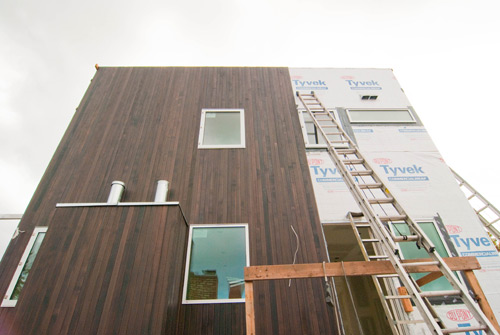
[Kirsch Residence by BUILD LLC]
FOR WOOD SIDING SYSTEMS (typically cedar):
1. Use 3/4” material, prefinished on all sides with all cuts treated; this will significantly increase the life of wood siding.
2. Make sure that there is adequate pigment in the stain so that the siding can hold up against the inevitable breakdown from UV rays.
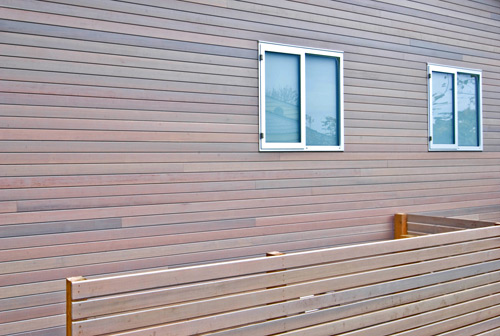
[Brodersen Remodel by BUILD LLC]
3. Specify custom flashings that match the finish of the siding material; capping walls and elements cleanly significantly improves the finished look of the siding system. A good example of this is the situation at window heads where an unintentional and chunky detail can visually spoil the siding system.
4. The wood should always be held a minimum of 1/8” away from flashings to reduce staining and wicking.
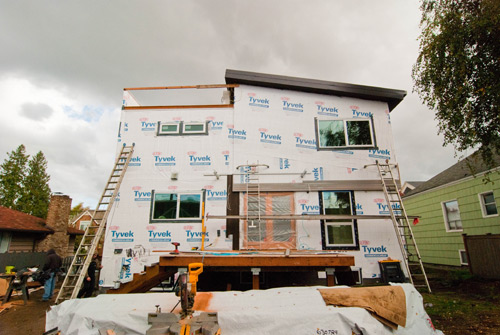
[Kirsch Residence by BUILD LLC]
5. Set-up the window/door patterns and the details for trim-less exterior profiles well in advance of installing the siding. When it comes time to install the siding, it should be a simple matter of following instructions that have been previously thought-out.
6. Organize the siding system into clean planes of siding and glass. This sharpens up the project and typically creates a simple set of rules for the siding system to follow.
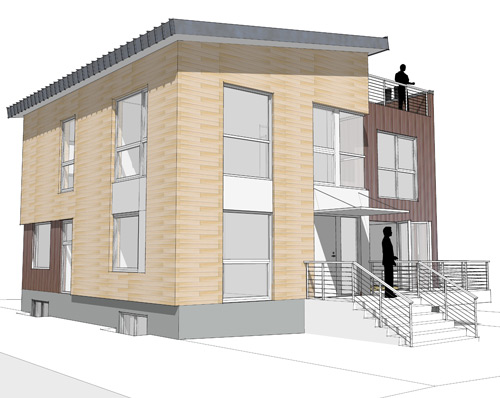
[Kirsch Residence by BUILD LLC]
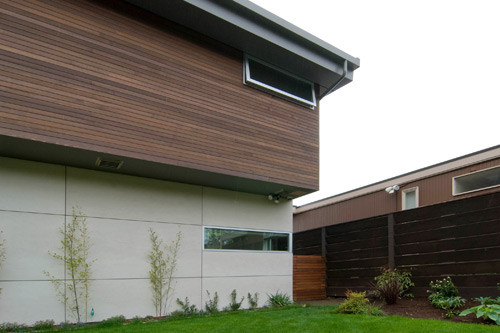
[Davidson Residence by BUILD LLC]
FOR PANELIZED SIDING SYSTEMS:
7. Always pick modules that are slightly less than the sheet material size. Sheets can be slightly trapezoidal, edges can get dinged, etc. Allow for a margin that can be trimmed off the panels, since you can’t add onto the panels (without doubling amount of panels).
8. True cement board panels like Sill-LEED are more expensive up-front, but they are no-maintenance in future (the siding system needs to be a rainscreen system for true cement board panels).

[Davidson Residence by BUILD LLC]
9. Smooth Hardie-Board panels are a good option for inexpensive rainscreen systems or applied systems as long as all the edges are primed/ painted and all the penetrations are treated carefully. The material has a paper pulp composition which has always concerned us a bit (hence the full coverage with the weather proofing).
10. Review your material, paint & stain samples outside in true lighting conditions. There’s a big difference between natural daylight and incandescent/fluorescent interior lighting when it comes to siding samples.

[Davidson Residence by BUILD LLC]
You can check out a previous post on rainscreens for an explanation of the concept, some details and a handful of built case-studies. You might also find our post on parapet detailing useful.
Cheers from team BUILD





